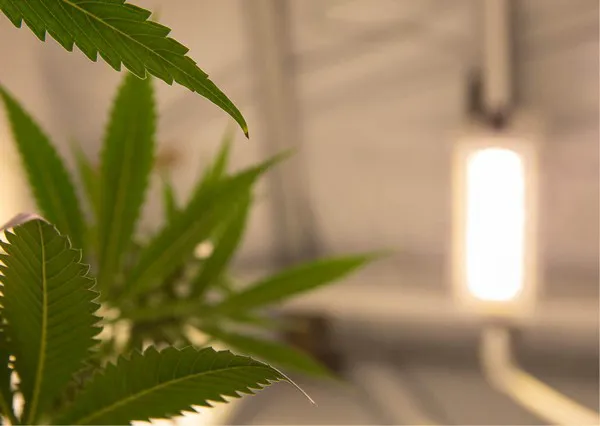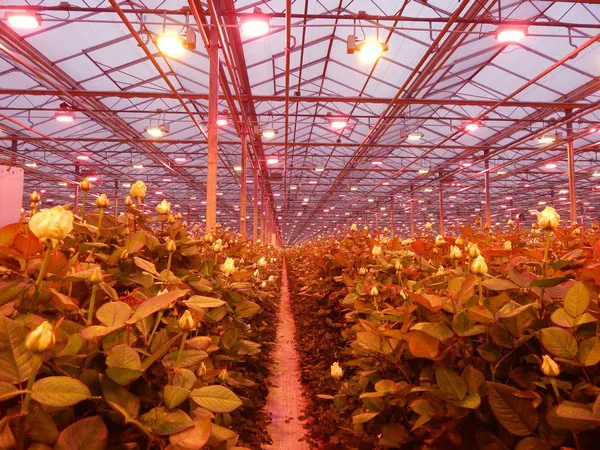Some crops benefit from high light levels, such as cannabis and roses. Cannabis grows faster thanks to a lot of light, and roses get more branches and need less time to reach full bloom. A high light level is therefore interesting for production and turnover in various crops.
A higher light level automatically means more heat and in many cases that is not desirable. HPS lamps become so hot that lighting at high light levels is not possible for long periods. Moreover, the temperature in the whole greenhouse rises, making the climate increasingly difficult to control and negatively influencing the plant temperature.
The usual solution is to keep this heat under control by means of cooling systems. This requires a substantial investment with a high energy bill, but the climate never becomes truly stable.
This calls for a sustainable solution because only not lighting at all is currently cheaper.
Active cooling
Oreon cools its LED fittings using active water cooling. The water carries the heat directly away from the LEDs and out of the fittings. Not only does this enable the lamps to provide a higher and more constant level of light, it also logically reduces excessive heat in the greenhouse or closed climate cell. It makes large HVAC systems superfluous and thus reduces investment costs and energy bills.
Indoor cannabis cultivation
A cannabis plant can tolerate very high light levels, but at the same time it benefits from a stable growing climate. A stable temperature is essential, especially when growing medicinal cannabis. The active ingredients (THC and CBD) of this plant must be stable for processing and when the temperature differences are too high, moulds can develop. This is a challenge in the greenhouse, but especially in indoor cultivation. Here too, growers are faced with sky-high energy bills, partly due to expensive HVAC systems that consume a lot of energy. An active water-cooled LED fixture offers a welcome solution here: a stable temperature and less energy consumption.

More roses per square metre
2021 was not an easy year for rose growers and this year does not bode well. Fortunately, development in rose-growing is not standing still; the growth and quality of the crop can be controlled more and more easily and growers are increasingly switching from HPS to a hybrid configuration or even to full LED.
Thanks to the high light levels that can be achieved with LED, it is possible to grow more roses per square metre. With HPS, this would only be feasible if the roses were lit 24 hours a day. However, legislation on light pollution does not allow this and forces growers to 'screen'. This produces extra heat in the greenhouse, which means you have even less control over the temperature and humidity in the greenhouse.

Oreon's 'rose spectrum' makes it possible to grow more high-quality roses very efficiently. Ukrainian rose grower Ascania has been lighting with water-cooled LEDs since 2020, resulting in 30% more light and also 30% more yield.
How much can be saved?
With the current high energy prices, it is obvious that it is cheaper to light with LEDs instead of HPS, but how much does it really save? First of all, you need far fewer fixtures to achieve a high level of light; about twice as much light comes out of a high-quality LED fixture than an HPS fixture. Moreover, an LED lamp consumes on average 45% less energy than an HPS lamp. So you can calculate the profit.
In addition, the heat from the LEDs is directly removed by the water cooling system. The heat from HPS, on the other hand, is removed by cooling systems. Calculations show that in a climate cell it saves no less than 65% in heat. This means 65% less cooling capacity and therefore considerably lower energy consumption.
Moreover, even more energy can be saved because the heat that is removed can be reused. Heat that does not need to be purchased from the heat network.
For more information: 
Oreon
info@oreon-led.com
www.oreon-led.com
